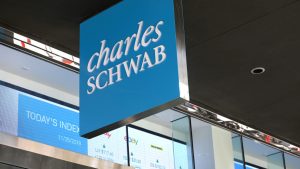Tesco (LSE: TSCO) shares have taken me by surprise. A few years ago, I rejected the idea of buying them out of hand.
I thought the big supermarkets were done as German discounters Aldi and Lidl gobbled up market share. The UK cost-of-living crisis didn’t just make shoppers poorer, it made raw materials pricier, squeezing Tesco from both ends.
Also, Tesco operated to the finest of margins of just 3% or so. It has huge fixed costs with a nationwide network of stores and staffing numbers into the six digits. Plus its reputation was still tarnished by the disastrous Philip Clarke, which ended in a profit warning and accounting scandal.
The Tesco share price is flying
Fast forward a few years and Tesco is in a much jollier place. It’s still the largest UK grocer by far, and it’s growing too. Latest Kantar data showed Tesco market share hitting 27.8%, the highest since January 2022.
Its shares are up 57.44% over five years, and 36.74% over 12 months. That’s four times average FTSE 100 growth of 8% over the same period.
Tesco’s trailing yield has fallen to a modest 3.27%. That’s partly down to its booming share price, but not entirely. The board hiked the dividend by 11% to 12.1p per share in 2024. However, it’s held it in two of the last five years (at 9.15p in 2021 and 10.9p in 2023).
A total return of around 40% over the last year is pretty impressive for a £25bn blue-chip, operating in a mature and competitive market. Tesco further rewarded investors with £750m worth of share buybacks.
Stellar FTSE 100 stock
Tesco was a good investment five years ago, but what about today? As we saw this morning, the cost-of-living crisis isn’t completely over, with inflation steady at 2.2% in August. Wages grew 5.6%, making people better off in real terms, but household budgets are still under pressure.
First-quarter sales jumped 4.6%. On 13 September, Citi predicted second-quarter growth of 3.8%, upgrading its earlier prediction of 3.4%. It reckons Tesco is on course to beat full-year guidance thanks to “low-single-digit UK food inflation, and four straight quarters of UK market share gains”.
Citi upped its price target from 350p per share to 425p. That’s up 15% from today’s share price but is at the higher end of broker expectations. The 12 analysts following Tesco have a median one-year price target of 380.5p. That’s not quite so lip-smacking.
Tesco shares aren’t that expensive, trading at 15.6 times earnings, but they’re not cheap either. The Labour government’s plan to boost workers’ rights could put pressure on Tesco, which recently lost a legal case to shop workers’ union Usdaw over its ‘fire-and-rehire’ tactics. Operating margins remain narrow at 4.1%. If Tesco struggles to build on recent market share gains, there’s a risk that investors could lose interest.
Every stock has risks and these seem relatively minor. So is Tesco a no-brainer buy? As much as any stock can be, yes. I’ll buy it when I have the cash
This post was originally published on Motley Fool




